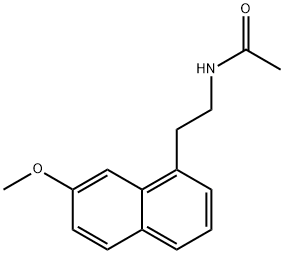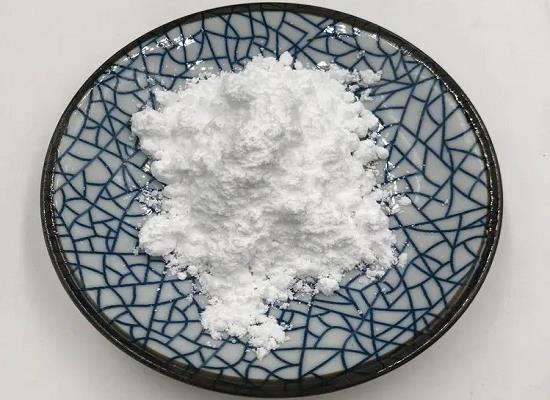Agomelatine: A Breakthrough in Antidepressant Therapy
Brief introduction
Agomelatine, also known as Aminin, is a novel antidepressant drug. Its mechanism of action breaks through the traditional monoamine neurotransmitter system, by activating melatonin receptors MT1 and MT2, as well as antagonizing 5-HT2C receptors, it exerts antidepressant efficacy while also regulating biological rhythms. With Ki values of 0.1, 0.06, 0.12, and 0.27 nM for CHO-hMT1, HEK-hMT1, CHO-hMT2, and HEK-hMT2, respectively. Agomelatine is also a selective 5-HT2C receptor antagonist, with pKi values of 6.4 and 6.2 in natural (pig) and cloned human 5-HT2C receptors, respectively. Next, let's delve into AGOMELATINE together.

Figure 1 Characteristics of Agomelatine
Mechanism of action
The exact mechanism of AgoMelatine's antidepressant effect is currently unclear. Simple 5-HT2C receptor blockers do not have antidepressant effects. AgoMelatine can block 5-HT2C receptors, but animal experiments have shown that melatonin also has a small antidepressant effect, and studies have found that stress is related to melatonin secretion. However, taking melatonin in humans has not shown significant antidepressant effects.
Another study suggests that the mechanism of AgoMelatine's antidepressant effect may be related to increased plasticity and neuronal proliferation in the hippocampus. The proliferation, regeneration, and death of nerve cells in the brains of adult rats were determined by immunostaining. The results showed that long-term (3 weeks) administration of AgoMelatine increased cell proliferation and neuronal regeneration in the ventral dentate gyrus of the hippocampus, which is related to emotional responses. However, similar situations were not observed during acute or subacute administration (4 hours or 9 weeks). After prolonged administration, cell proliferation and neuronal regeneration were observed in the entire dentate gyrus region, indicating that agomelatine can increase hippocampal nerve regeneration to varying degrees, thereby producing new granulosa cells.
Patients with depression often have difficulty falling asleep, waking up early, or changes in sleep rhythm. Polysomnography often shows a decrease in slow wave sleep (SWS), an increase in rapid eye movement (REM) density or a decrease in latency, and a decrease in delta sleep ratio. Most antidepressants, such as tricyclic antidepressants (TCA) and selective 5-hydroxytryptamine reuptake inhibitors (SSRI), have a regulatory effect on REM sleep but have poor effects on non-REM sleep, especially SWS. Some drugs with 5-HT2 receptor-blocking effects, such as mianserine and metronidazole, can promote sleep and improve sleep duration. However, their blocking effects can cause drowsiness during the night and daytime. Agomelatine has a unique pharmacological mechanism of regulating the sleep-wake cycle, thus it can regulate the sleep structure of patients at night and enhance sleep.
In vitro research
In the hippocampus of mice subjected to chronic stress electric shock, AgoMelatine fully normalized cell survival affected by stress and partially reversed reduced doublecortin expression.
In vivo research
In genetically modified mice, AgoMelatine effectively reversed the forced swimming test and behavioral changes in the elevated cross maze. Agomelatine also significantly accelerated the adjustment of temperature and activity during the day-night cycle, followed by an induced content phase shift. In the ventral hippocampus (VH) of adult rats, which is an area associated with emotional disorders, Agomelatine enhances cell proliferation and neurogenesis. Agomelatine increases the proportion of mature and immature neurons, and enhances the proliferation of granule cells in adult rats, indicating accelerated maturation. Agomelatine also activates multiple cellular signals (extracellular signal-regulated kinase 1/2, protein kinase B, and glycogen synthase kinase 3 β), which are regulated by antidepressants and involved in proliferation/survival control. Agomelatine increased the time spent participating in social activities in unfamiliar paired rats exposed to a new environment. In the ventral dentate gyrus of rats, Agomelatine increases cell proliferation and neurogenesis, which is involved in emotional response, consistent with the antidepressant and anti-anxiety properties of Agomelatine. Agomelatine increased the survival of newborn neurons throughout the dentate gyrus of rats.
References:
[1] DEMYTTENAERE K. Agomelatine: A narrative review[J]. European Neuropsychopharmacology, 2011, 21: S669-S716. DOI:10.1016/j.euroneuro.2011.07.004.[2] CHRISTIAN DE BODINAT. Agomelatine, the first melatonergic antidepressant: discovery, characterization and development.[J]. Nature Reviews. Drug Discovery, 2010, 9 8. DOI:10.1038/nrd3140.
Related articles And Qustion
Lastest Price from Agomelatine manufacturers

US $0.00/kg2025-11-05
- CAS:
- 138112-76-2
- Min. Order:
- 25kg
- Purity:
- 0.99
- Supply Ability:
- /

US $0.00/KG2025-05-06
- CAS:
- 138112-76-2
- Min. Order:
- 1KG
- Purity:
- 0.99
- Supply Ability:
- 1000KG



